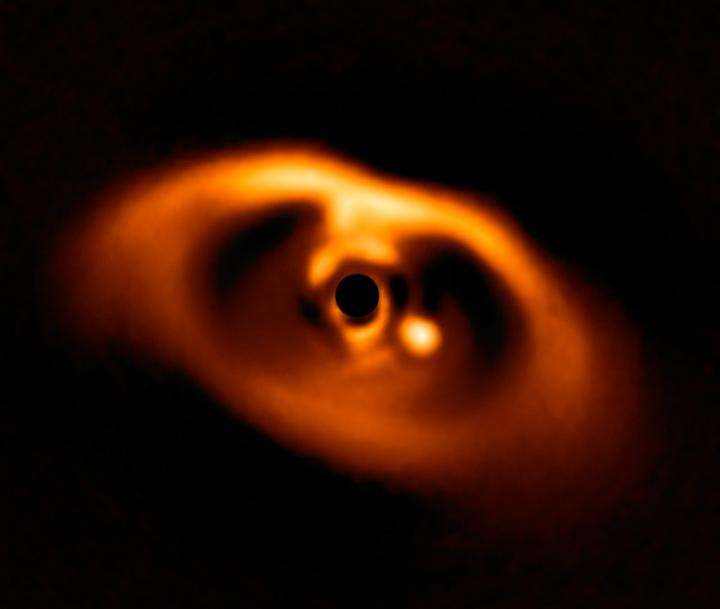 Credit:
ESO/A. Müller et al
Credit:
ESO/A. Müller et al
The image, captured with advanced, surface-based telescopes, shows the new planet developing around the dwarf star PDS 70, which is located around 370 light-years from Earth.
The new planet — named PDS 70b — is orbiting roughly three billion miles from the central star, around the same distance between Uranus and the sun. Further analysis shows that the new planet is a giant gas planet with a total mass several times that of Jupiter. The planet is much hotter than anything in our solar system, too, with a surface temperature of around 1,000 degrees Celsius.
The image was produced by an advanced piece of equipment within the Very Large Telescope array at the European Southern Observatory's facility in northern Chile. The SPHERE device — which stands for Spectro-Polarimetric High-contrast Exoplanet REsearch instrument — studies exoplanets and discs around nearby stars using a technique known as high-contrast imaging.
The astronomy team that captured the new image was led a group from the Max Planck Institute for Astronomy in Heidelberg, Germany.
To even be able to see the new planet, the telescope had to first block out the bright light of the central star itself. To that end, the SPHERE system incorporates a coronagraph, which obscures the blinding light of the central star and allows astronomers to detect the much fainter light bouncing off the planet and the spinning disk of coronal materials.
“These disks around young stars are the birthplaces of planets, but so far only a handful of observations have detected hints of baby planets in them,” lead researcher Miriam Keppler said in a statement released with the new image. “The problem is that until now, most of these planet candidates could just have been features in the disk.”
RELATED: Mysterious Interstellar Object ‘Oumuamua Has Finally Been Identified
The discovery of PDS 70b is a significant event for astronomers, and subsequent teams of researchers are already following up on the initial research. In fact, it was a secondary team that captured the remarkable image.
The image isn't just pretty, either. By carefully parsing the data underlying the new imagery, astronomers are able to determine some of the planet's chemical and physical properties. This, in turn, enables scientists to test theoretical models of planet formation.
“Keppler's results give us a new window onto the comple and poorly-understood early stages of planetary evolution,” said André Müller, a postdoctoral researcher at the Max Planck Institute for Astronomy and leader of the second team to investigate the new planet. “We needed to observe a planet in a young star's disc to really understand the processes behind planet formation.”
Two studies describing the findings were published in the journal Astronomy and Astrophysics.